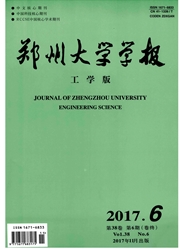

 中文摘要:
中文摘要:
针对当前电力系统中同步相量测量单元(PMU)测量点少、无法直接进行状态估计的问题,提出一种新的状态估计算法.考虑到PMU系统量测精度比SCADA系统高,为了扩大高精度量测信息对状态估计结果的影响,算法将状态变量分成PMU可观测变量和PMU不可观测变量,并分别进行状态估计.对于PMU可观测变量,利用PMU量测量进行线性状态估计;对于PMU不可观测变量,利用线性状态估计的结果结合SCADA量测量进行降阶的快速分解状态估计.这种解耦的算法相对于传统混合状态估计算法计算更加简洁,并且有较高的数值稳定性.最后,利用多个IEEE标准测试系统对算法进行验证,通过与基本加权最小二乘法和快速分解算法对比,证明该算法在数值稳定性和精度上有很大优势.
 英文摘要:
英文摘要:
At present, the phase measurement units were not sufficient for static state estimation in most exist- ing power systems. A novel method was proposed to solve the problem in this paper. Realizing that PMU measurements were more accurate than SCADA ones, the proposed approach estimated PMU unobservable states and PMU observable states separately so as to expand the effect of PMU measurements on the result. For the PMU observable states, they were estimated by PMU measurements using a linear estimator. And the PMU unobservable states were estimated by conventional measurements in a reduced-order nonlinear estimator. When compared with conventional approaches the proposed decoupled method features reduced computational complexity and greater numerical stability. In the end, this method was verified that it had more advantages than weighed least square method and fast decomposition algorithm by simulations on standard IEEE test sys- tems.
 同期刊论文项目
同期刊论文项目
 同项目期刊论文
同项目期刊论文
 期刊信息
期刊信息
